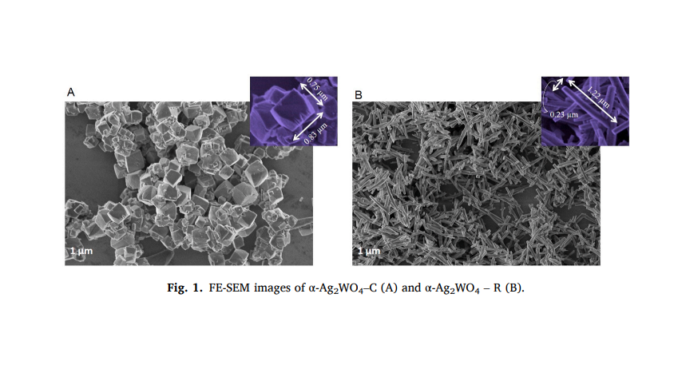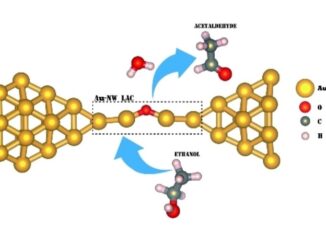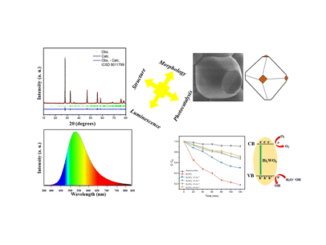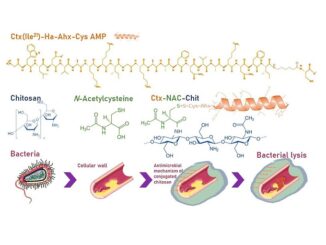
Toxicity of α-Ag2WO4 microcrystals to freshwater microalga Raphidocelis subcapitata at cellular and population levels
Abstract: Silver-based materials have microbicidal action, photocatalytic activity and electronic properties. The increase in manufacturing and consumption of these compounds, given their wide functionality and application, is a source of contamination to freshwater ecosystems and causes toxicity to aquatic biota. Therefore, for the first time, we evaluated the toxicity of the silver tungstate (α-Ag2WO4), in different morphologies (cube and rod), for the microalga Raphidocelis subcapitata. To investigate the toxicity, we evaluated the growth rate, cell complexity and size, reactive oxygen species (ROS) production and chlorophyll a (Chl a) fluorescence. The α-Ag2WO4 – R (rod) was 1.7 times more toxic than α-Ag2WO4–C (cube), with IC10 and IC50 values of, respectively, 8.68 ± 0.91 μg L−1 and 13.72 ± 1.48 μg L−1 for α-Ag2WO4 – R and 18.60 ± 1.61 μg L−1 and 23.47 ± 1.16 μg L−1 for α-Ag2WO4–C. The release of silver ions was quantified and indicated that the silver ions dissolution from the α-Ag2WO4 – R ranged from 34 to 71%, while the Ag ions from the α-Ag2WO4–C varied from 35 to 97%. The α-Ag2WO4–C induced, after 24 h exposure, the increase of ROS at the lowest concentrations (8.81 and 19.32 μg L−1), whereas the α-Ag2WO4 – R significantly induced ROS production at 96 h at the highest concentration (31.76 μg L−1). Both microcrystal shapes significantly altered the cellular complexity and decreased the Chl a fluorescence at all tested concentrations. We conclude that the different morphologies of α-Ag2WO4 negatively affect the microalga and are important sources of silver ions leading to harmful consequences to the aquatic ecosystem.
Author(s): Abreu, C.B.; Gebara, R.C.; Reis, L.L.; Rocha, G.S.; Alho, L.O.G.; Alvarenga, L.M.; Virtuoso, L.S.; Assis, M.; Mansano, A.S.; Longo, E.; Melão, M.G.G.
Chemosphere
Published: February 2022, Volume 288, Part 2, 132536
DOI: https://doi.org/10.1016/j.chemosphere.2021.132536
CDMF
The CDMF, hosted at the Federal University of São Carlos (UFSCar), is one of the Research, Innovation and Dissemination Centers (RIDC) supported by the São Paulo State Research Support Foundation (Fapesp), and also receives investment from the National Council Scientific and Technological Development (CNPq), from the National Institute of Science and Technology of Materials in Nanotechnology (INCTMN).




